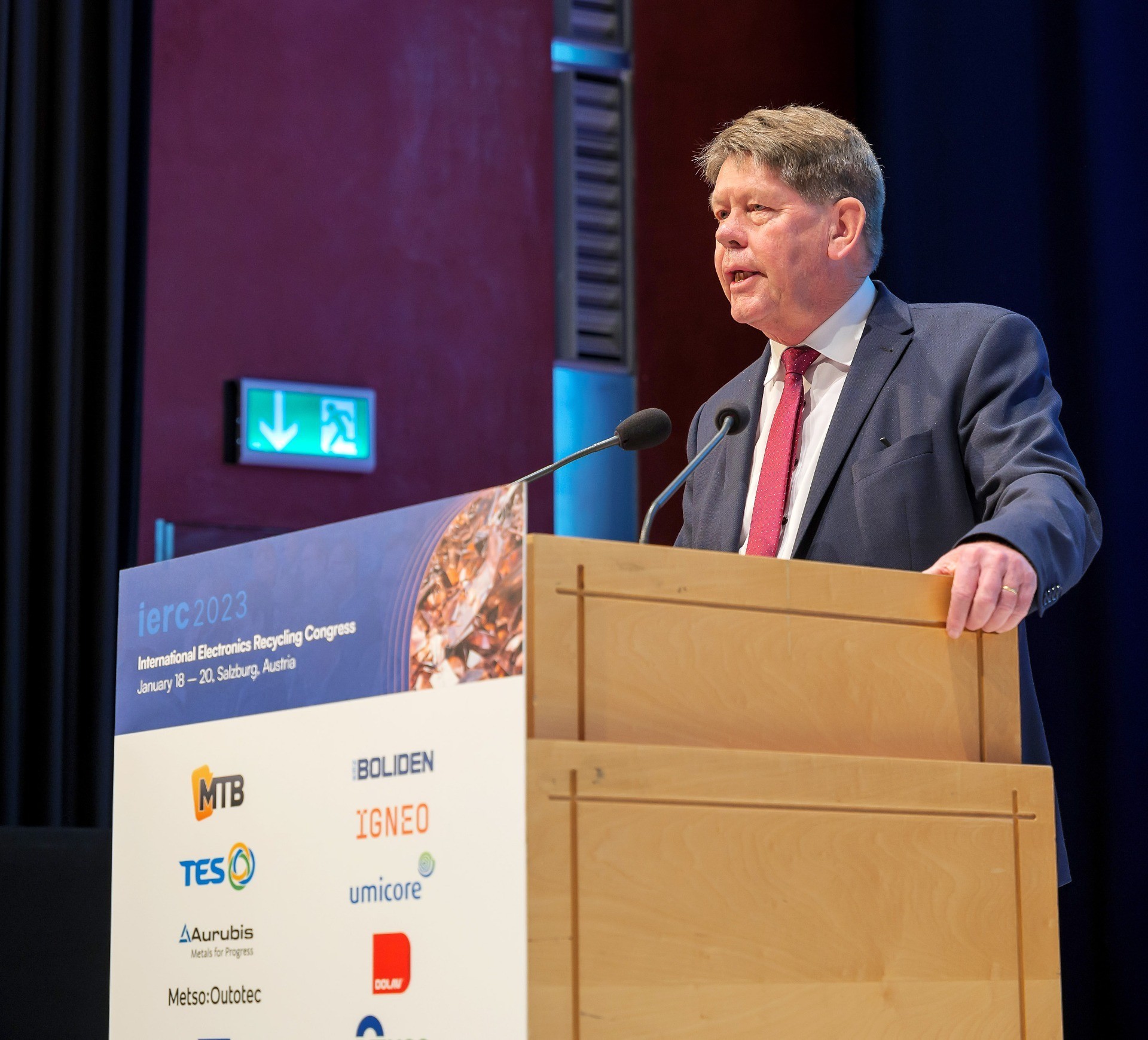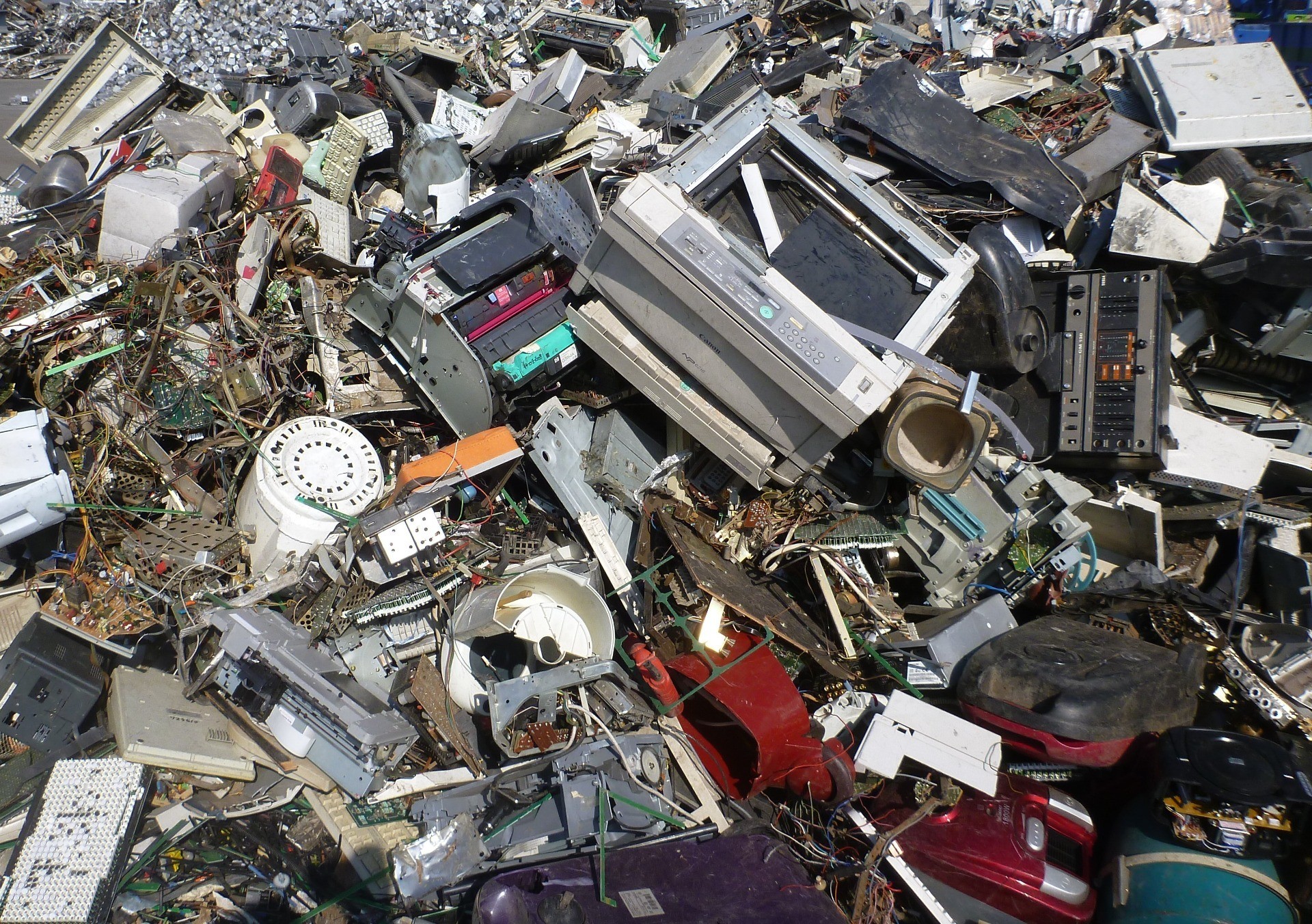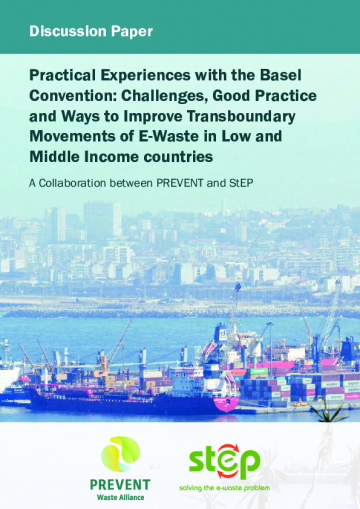What do Switzerland and Ghana have in common?
At first glance, these two countries have very little in common. However, if one looks at this question through the lens of the international recycling industry, the term „Swiss-Ghana“ has a high degree of topicality within the industry. The Swiss-Ghana proposal for the classification of e-scrap within the framework of the Basel Conventions was also on the agenda at the IERC, among others. Many congress participants agreed that these new regulations contain a potential danger. The wording of the proposal could lead to many more e-scrap being classified as hazardous in the future, resulting in massive additional costs for shipment and processing. A presentation by MGG-expert Chris Slijkhuis, who took a critical look at this proposal, caused quite a stir.
Before diving deeper into the subject of „electronic waste and its shipment“, it is worth taking a look at the current facts and figures according to the „Global Transboundary E-Waste Flows Monitor 2022“. According to the report, around 53.6 million tonnes of e-waste (Waste of Electrical and Electronic Equipment - WEEE for short) are generated worldwide every year. Of this, 9.3 million tonnes can be documented to be „environmentally soundly treated“, but that is only 17 (!) percent of the e-waste generated. The rest, around 83% of WEEE, disappears into unknown, dark channels. Of the properly processed material, 5.1 million tonnes are currently moved transboundary and 1.8 million tonnes need notification for this international shipment, which entails a very complex licensing procedure. Compared to other continents, Western Europe is a model student when it comes to e-waste shipments, as around 42.5% of the e-waste generated here is properly documented. For comparison: in North and South America it is only 9.4 %, in Asia 11.7 % are registered and in Africa only 0.9 % of the e-waste generated is known where it ends up.
For e-waste expert Chris Slijkhuis, this list leads to a clear conclusion, as he reported in the course of a speech at the IERC in Salzburg in January 2023: „Of 44.3 million tonnes of WEEE, we don't know what happens to it. That means a huge market of potential recycling material! And this potential has to be exploited if we understand how important a good and proper recycling circular economy is for our world.“
Legal back-and-forth on plastic waste shipment requirements
International recycling stakeholders are constantly developing new targets. For example, during the 2017 Basel Convention meetings in Bonn, the Norwegian proposal to reclassify plastic waste with new codes (B3011, Y48 and A3210) was agreed to better limit and control the transboundary movement of contaminated plastic waste. The implementation in Europe took place within a few days during the 2020 Christmas period. The corresponding law was published on 22 December 2020 and already came into force on 1 January 2021. However, the implementation of these own EU classification codes is currently being questioned again in the course of an amendment: On 17 January 2023, the European Parliament voted by a majority in favour of a return to the Basel Codes.

„However, this back and forth is a huge challenge for the European recycling industry. In order for the recycling industry to be sustainable and work in the long term, it needs a certain minimum of legal consistency and stability,“ explained Chris Slijkhuis in his IERC presentation.
Swiss-Ghana: Right theoretical intention, but impractical demand
However, the central point of his presentation in Salzburg dealt with the so-called „Swiss-Ghana Proposal“, which was adopted at the COP (Conference of the Parties) of the Basel Convention in June 2022 in Geneva. The countries of Switzerland and Ghana had presented a proposal according to which all waste electrical and electronic equipment should be disposed of in an environmentally sound manner and processed according to state-of-the-art technology. „Swiss-Ghana cites the fact that there is currently still a lot of green-listed e-waste that can be shipped across borders without the permission of the competent authorities. In practice, this means that a lot of old electronics are put into a container and sent to Africa under the motto „You can still use that!“. In reality, however, it is e-waste. And this must be prevented in order to reduce the risks for people and the environment! Isn't that exactly what we want?“ MGG-expert Slijkhuis asked the audience ironically in Salzburg. According to the Swiss-Ghana proposal, a new Y49 entry would replace the existing Basel codes B1110 and B4030. Y49 includes the requirement that all fractions defined as e-scrap need a notification. This should make it possible to check that the e-scrap always goes to the right recyclers who process it in a technologically correct way. „In a nutshell, this change means that in the future, non-hazardous e-waste and fractions thereof will also have to be notified in the event of a cross-border shipment. The question is, however, whether the authorities will be able to process this flood of additional notification applications. Because there are too few resources available for this in most EU countries,“ Slijkhuis said.

The more dangerous demand in the Swiss-Ghana proposal, however, is to replace the current entry A1180 of the Basel Codes with a new entry A1181. According to the ideas of Switzerland and Ghana, which were adopted at the Basel Conference of the Parties in June 2022 and are to be implemented by 1 January 2025, all WEEE and fractions thereof that may contain asbestos, lead, cadmium, mercury or brominated flame retardants would ultimately have to be considered hazardous. A1181 also qualifies a fraction as hazardous if it contains, for example plastic parts (in which there may be brominated flame retardants) or printed circuit boards. According to Chris Slijkhuis, this means that anything can be classified as hazardous waste: „My interpretation of this proposal is this: If I were a government agency and I saw a truck with e-waste that I had to classify, I would play it safe.
If it cannot be proven that these components are not contained, then I would rather assume that something is inside. And that makes this fraction dangerous. Since there are no quantity limits in this proposal either, it becomes very easy for authorities to classify everything as dangerous.“ Slijkhuis also finds it incomprehensible and contradictory that brominated flame retardants are usually not a problem in consumer products, but are classified as hazardous in waste: „Why should printers, which people use every day, suddenly become hazardous goods when they are disposed of?“
And why did Switzerland and Ghana come up with this proposal? Apparently, the purpose of the two countries' proposed amendment is to stop the dubious export of complete WEEE with little value to emerging countries. Hardly any expert assumes that the two countries want to prevent the trade of raw material fractions that are extracted in technologically modern recycling plants. In principle, a laudable approach, but with potentially far-reaching implications for WEEE trade worldwide.
Quo vadis Swiss-Ghana?
The Swiss-Ghana proposal was adopted in the Basel Convention body in June 2022 and will be implemented from 1 January 2025. That is a fact. Until then, however, it is expected that this proposal will continue to be hotly and probably controversially debated, especially at the regulatory levels of the OECD and the EU. Japan in particular, with its large recovery facilities for printed circuit boards recycling material, will oppose this proposal at the OECD level. And there will also be much discussion at the EU level, as Chris Slijkhuis predicts: „At the Basel level it is decided. In order to ensure the proper recycling of WEEE in the EU, I assume that at least corresponding modalities will be developed in the EU by 2025. Perhaps then there will be a separate EU code EU49 with guidance or guidelines for intra-EU trade without the need to classify everything as hazardous waste. After all, notifications guarantee that proper processing takes place. And that, after all, was the declared aim of the Swiss-Ghana proposals!“
In our upcoming summer issue of the MGG Newsletter, we will further explore this complex issue and the topic of e-waste classification.
Current discussion paper on „Practical Experiences with the Basel Convention: Challenges, Good Practice and Ways to Improve Transboundary Movements of E-Waste in low and Middle Income countries.“

